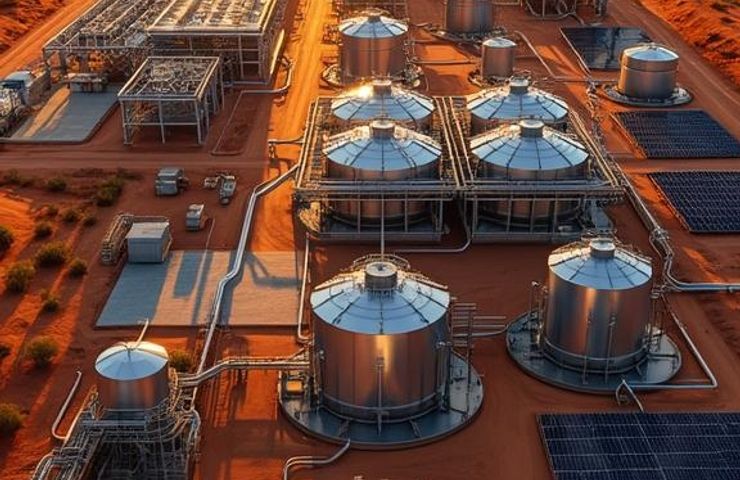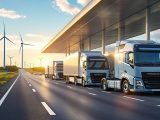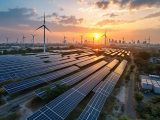
Australia Launches $2bn Boost for Hydrogen Production in Second Hydrogen Headstart Round
October 13, 2025So, can Australia really lock in its spot as a global hydrogen production powerhouse? That question’s buzzing through energy ministries and boardrooms from Canberra to across the globe. On 10 October 2025, the Australian Government—via the Australian Renewable Energy Agency (ARENA)—flipped the switch on Round 2 of its Hydrogen Headstart Programme, teeing up A$2 billion to jumpstart commercial-scale green hydrogen ventures. The goal’s simple: drive down costs, fast-track industrial decarbonization where electric grids alone fall short, and cement Australia’s role in the race to net-zero.
Building on solid foundations
Since 2017, ARENA has been Australia’s own hydrogen test kitchen, pouring over A$370 million into 65 pilot and demo projects. From early electrolyser trials in Queensland to green ammonia experiments in Western Australia, that first funding round showed us what works—and flagged where the price tags must come down. Government bodies, universities and private developers teamed up on “first-of-a-kind” plants, pushing everything from new membrane materials to bulk storage ideas. Those lessons now feed directly into Round 2, shifting the focus from one-off prototypes to bankable, export-ready installations.
Deep dive into the technology
At the heart of every proposal is electrolysis: streaming solar and wind power into electrolyser stacks that split water into hydrogen and oxygen—without a single CO₂ molecule. But scaling up means beefing up the tech. ARENA wants breakthroughs in advanced electrolyser design—better catalysts, plug-and-play modules and smart controls that ride out power swings. The magic formula? Boost efficiency, hack down capital costs, and squeeze every kilowatt-hour. Tying these systems into existing solar parks or wind farms should help smooth the grid and make hydrogen production a reliable partner to variable renewables.
Fueling hard-to-abate sectors
Switching your home or EV to renewables is one thing; greening a steel mill or a fertiliser plant is another story. That’s why Round 2 zeroes in on heavy hitters: green ammonia for fertilisers, low-carbon iron and steel, alumina refining and long-haul transport—think aviation, shipping and heavy trucking. In port hubs from Newcastle to Darwin, developers are planning electrolysis units that feed into ammonia crackers, blending terminals and export jetties. By piggy-backing on existing infrastructure, those precincts could shave off millions of tonnes of CO₂ every year.
De-risking the first movers
Plunging cash into new tech can feel like a tightrope walk. That’s where ARENA’s A$2 billion kitty comes in, offering a revenue-support model—kind of like a contract-for-difference—to guarantee early cashflows and unlock commercial financing. With clear price floors and target timelines, developers can green-light equipment orders, nail down power purchase deals and ink export contracts without losing sleep over policy U-turns. It’s the confidence boost needed to lure private investors and stitch together supply chains—from electrolyser makers to pipeline operators.
Economic ripple effects
Chopping carbon is just the start. Round 2 is set to spark job creation, skill boosts and regional growth. Engineers, project leads, technicians and ops crews are already in hot demand. Local manufacturing of cell stacks, balance-of-plant gear and even specialized steel could kick off new supply hubs. Grid operators will retool networks for two-way flows, while training centres revamp courses to suit the upcoming hydrogen infrastructure. And as production ramps up, economies of scale should nudge prices down further—keeping Australia firmly in the global fast lane.
Dates to watch
If you’re a developer keen to dive in, mark your calendar: Expressions of Interest close on 9 December 2025. ARENA is also calling for feedback on the programme’s framework—cost benchmarks, blending ratios and commercial terms—through 31 July 2025. Shortlisted projects will move into a full application round in early 2026, dialing in their techno-economic models and locking in environmental approvals.
Competing on the world stage
Australia isn’t running this relay solo. Europe’s REPowerEU, the US Inflation Reduction Act’s tax perks and Japan’s hydrogen roadmaps are all charging ahead. Yet Australia still holds a trump card: vast sun-soaked plains and windy coastal belts that can host gigawatt-scale solar and wind farms, delivering some of the cheapest electricity on Earth. Couple that with deepwater ports and a seasoned LNG export framework, and you’ve got the makings of cost-competitive green hydrogen exports. Deals are already in the works—from MoUs with Japan’s METI to trade pacts with South Korea—underscoring why this second tranche of funding matters.
Building the backbone: infrastructure and storage
Even the slickest electrolyser needs solid backup. That’s where hydrogen infrastructure—pipelines, salt-cavern and high-pressure storage, blending stations—takes center stage. Round 2 winners will likely site near underground caverns or big-tank facilities, buffering supply when renewables dip. Blending hubs can also feed hydrogen into existing gas grids, giving customers a soft landing as they switch over. Some forward-thinking proposals even include on-site ammonia cracking plants, turning imports back into hydrogen and closing the loop on a full-circle value chain.
The road ahead
Round 2 lands just as global demand for green hydrogen surges—Europe, Japan and South Korea are all chasing steep decarbonization targets. But competition’s fierce: the Middle East is plotting gigawatt-scale clusters, and Europe’s doling out state aid for strategic hydrogen valleys. Australia’s edge? Our sun, wind and export-ready ports—but pulling it off means hitting deadlines, budgets and ever-shifting rulebooks. Nail those, and this A$2 billion boost could be the launchpad for a real industrial shake-up—turning big ambitions into the fuel that powers tomorrow’s zero-emission world.



 With over 15 years of reporting hydrogen news, we are your premier source for the latest updates and insights in hydrogen and renewable energy.
With over 15 years of reporting hydrogen news, we are your premier source for the latest updates and insights in hydrogen and renewable energy.